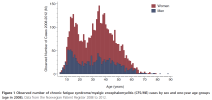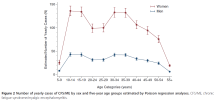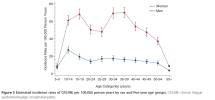Audrey Ryback talked about her work on electronic health care records in Lothian. This is impressive. They appear to have a genuinely population based cohort. The prevalence was up at 0.8% - 7,000 cases out of 900,000 people. In other words everyone with ME/CFS in a defined area. This begins to look like solid population data. (And I suspect GPs in Lothian are relatively good about coding ME/CFS compared to some places.)
The data provide a variety of measures of disease dynamics. Audrey stayed with us Wednesday night and also showed me work she has been doing with Simon on age of incidence profile which are to me pretty mind-blowing. Clues from the old Norwegian study look as if they are replicable. […] To me it looks as if there is a totally novel aspect to ME/CFS disease dynamics worth a very deep look at.




